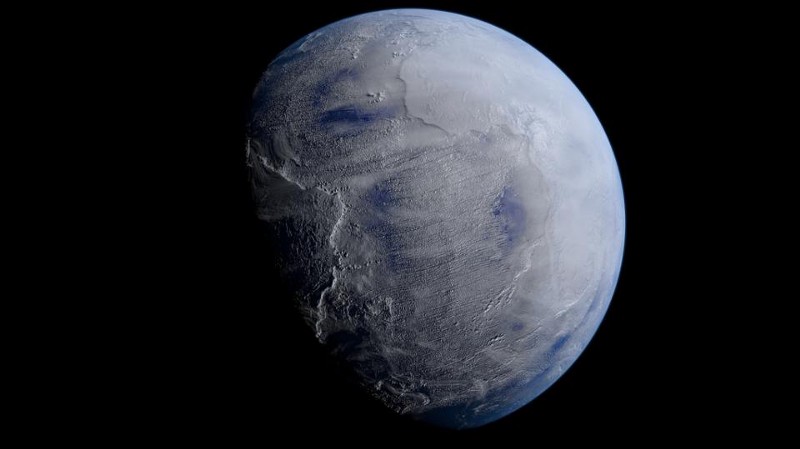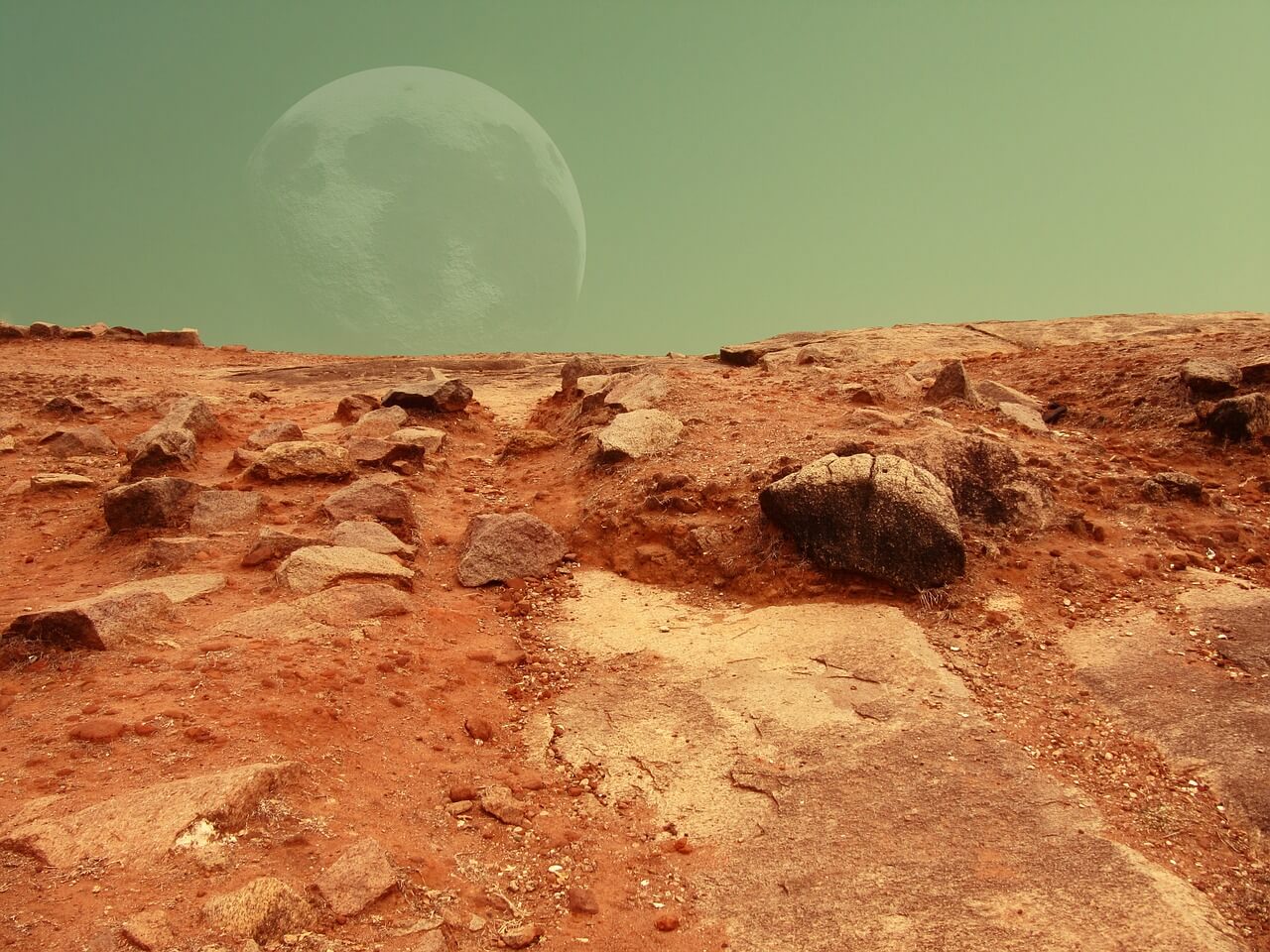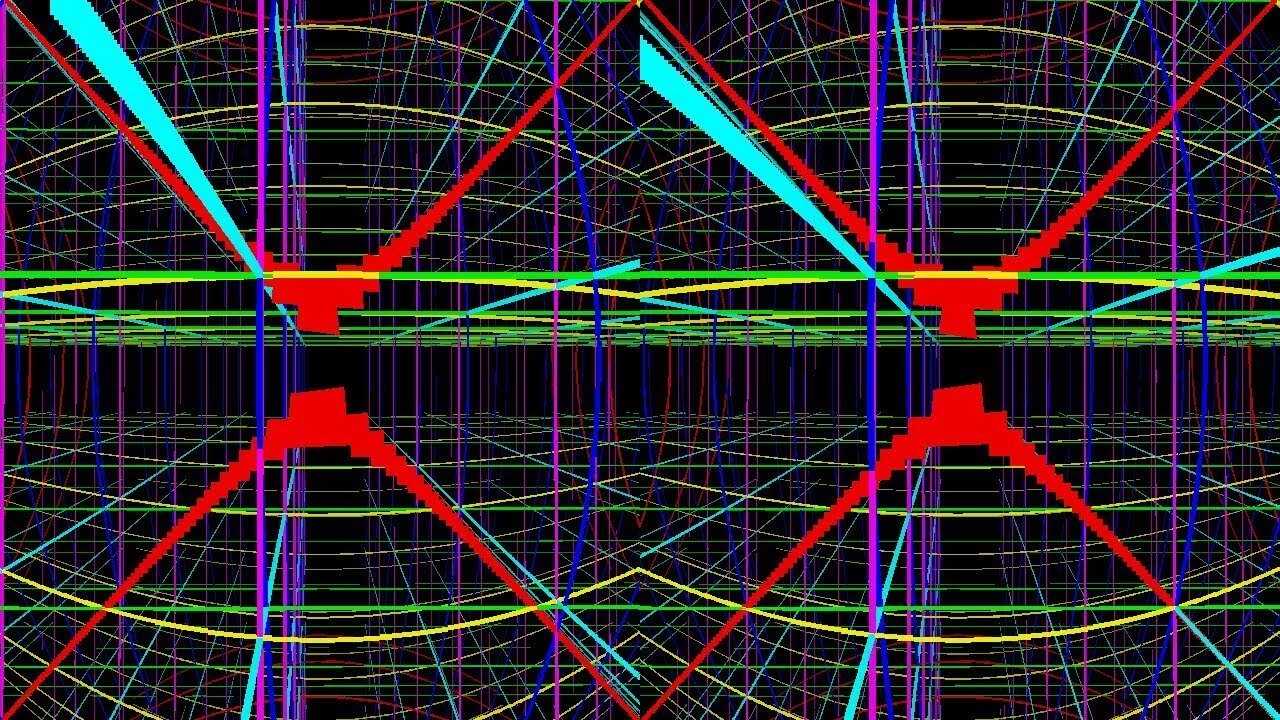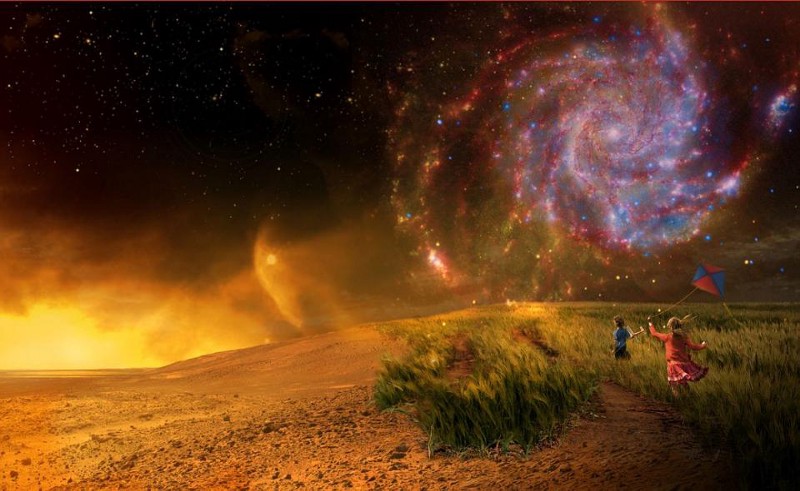Which end is waiting for the Solar system?
 Source:
Source:
It took 13.8 billion years of cosmic evolution, so we ended up here. Generation of stars had to live and die to create heavy elements; tiny protogalaxies had to merge to form the milky Way; clouds of interstellar gas were to collapse and form new stars with solid planets; complex inorganic and organic chemistry was supposed to make friends at one of these new worlds; biological evolution — and natural disasters — had to go on one of the winding paths to end up only a few thousand years ago there were people.
Over the last 12,000 years or so, we have created agriculture, science, country and all modern civilization that we know today. It is a fascinating journey that has transformed our world and, thanks to the space program of humanity, transforms our Solar system.
But the world which we enjoy today, regardless of what we do will not last forever. A number of earthly events should change things in our world and make the world completely unrecognizable to everyone who lives today. After about 60 000 years, the Sun and the stars will move and our modern constellations disappear from the face of the sky. In another 100,000 years we'll probably get into a new ice age, for reasons that have little to do with human activities. And before it will take another million years, the earth's volcanoes will forever change the landscape of the Earth.
But it is a trifle compared with the fact that the universe is preparing for us.
Slightly less than four billion years the Andromeda galaxy (and possibly galaxy Triangle) will merge with our milky Way galaxy, greatly modifying the structure of the galaxy and the view of the night sky. She is now 2.5 million light-years from us and moving at the speed of 43 km/s, so the first collision will happen in 3.8 billion years, and after 5.5 billion years, the merger will be completed. Gravity will cause the whole local group of galaxies will unite with our one giant elliptical galaxy Lacomeda. On large cosmic scales, all the other galaxies will continue to move away from us until out of our sight completely — after about 100 billion years.
All this time our Solar system will remain in order, except that the look will be different. The sun will continue to heat up as you age until after 1-2 billion years will not end life on Earth, boil the oceans of our planet. Another 5-7 billion in the core of the Sun runs out of nuclear fuel, and our home star will become a red giant, engulfing mercury and Venus in the process. Because of the peculiar stellar evolution, the Earth system — the Moon is likely to be pushed away and she was lucky to avoid the fiery fate of our inner neighbors.
After the Sun afterburning of the remaining nuclear fuel — mostly helium its outer layers will swell into a planetary nebula and the core will be compressed until it becomes a white dwarf. This is the ultimate fate of nearly all stars in our Universe. But the planet will still be here, spinning around our cold, dim the remainder stars another 9.5 billion years (if you count from the current time).
All this time the Earth will continue to revolve around the Sun, and the Moon to exert gravitational pull that will cause torque. Therefore, the Moon will go farther from Earth, thus slowing the rotation of the Earth. This slowdown is almost imperceptible; the Earth's rotation will slow down at some 1.4 milliseconds per hundred years. But after 50 billion years, the orbital period of the moon will be 47 days (currently at 27.3 days), and our 24-hour day will have to slow down to match this: day becomes longer than 47 times after 50 billion years. By the time the Earth and Moon will be tidal locked, meaning the Moon will always appear in the same place in the sky.
As the star formation continues, the dying star will dump its fuel in interstellar space and failed stars will merge together. The number of material for making stars will be limited. Even the longest-lived stars will exist some 100 trillion (1014), and after a quadrillion years (1015) the formation of stars runs out completely. Only accidental collisions or mergers between failed stars or their remnants will illuminate our galaxy; the rest of the process will be to plunge it into the cold and the dark. Finally, white dwarf stars become black when cool and emit their energy. Yes, it will take a lot of time (of the order of 1016 years), a million times the current age of the Universe. Atoms still are, but their temperature is slightly above absolute zero. Then the night sky would be really dark and black, without any visible light, because all the stars will cease to exist. At least in our local group of galaxies.
How much time it would take our black dwarf (which once was our Sun) to meet another, to merge with him and to revive him? Between us, Andromeda and the rest of the local group of about a trillion stars and stellar remnants. In this chaotic system is a system of stars may for a long time with nothing and no one to face, but we have time. 1021 years black dwarf at the center of our Solar system will randomly collide with another black dwarf, will produce a supernova explosion of type Ia and destroy what is left of our Solar system.
This will be the ultimate fate of many of the stars in our local group, but not all, and probably not ours. There is another process that will be more effective, and therefore more likely for us that the gravitational ejection from the local group due to the process of violent relaxation. If there are multiple bodies on the gravitational orbit is chaotic, one of them once ejected, leaving the others more tightly bound. This happens in globular clusters over time and explains why they are so compact and also why there are so many merged together old stars in the cores of these ancient relics.
The Gravitational emission occurs approximately 100 times more random merge, which means our star, and the other related planets are likely to be thrown into the abyss is empty space about 1019 years. But nothing lasts forever, even the cosmos. Each orbit — even gravitational orbits in General relativity — slowly disintegrate over time. May take a very long time, perhaps 10150 years, but eventually the Earth's orbit will collapse and it will tend to spiral towards the Central mass of our Solar system. This will be our fate if we throw it away.
But if we remain in a giant galaxy, which will turn Lacomeda, we are not destined to be in the black hole at the centre of the galaxy. For this to happen, it would take 10200 years, but black holes do not live so much. They slowly evaporate in the form of Hawking radiation. Thanks to this decay, even the most massive black holes in the Universe will live not more than 10100 years, and the black hole of solar mass is some 1067 years.
After the collapse of the black hole will be only dark matter, and therefore, the Land will flock to the black dwarf that was once our Sun. Regardless of how many times our world could be proved in the fire, our ultimate destiny — to freeze in the cold, empty Universe. Everything goes. That too.
...Recommended
What will be the shelter for the first Martian colonists?
Mars is not the friendliest planet for humans While the Red Planet is roaming rovers, researchers are pondering the construction of shelters and materials needed by future Martian colonists. The authors of the new paper suggest that we could use one ...
New proof of string theory discovered
Just a few years ago, it seemed that string theory was the new theory of everything. But today the string universe raises more questions than answers String theory is designed to combine all our knowledge of the Universe and explain it. When she appe...
What is the four-dimensional space?
Modeling camera motion in four-dimensional space. View the world in different dimensions changes the way we perceive everything around, including time and space. Think about the difference between two dimensions and three dimensions is easy, but what...
Related News
Anthropic principle: the warped idea of physics
the Universe has fundamental laws that we can observe. In it we exist, things that we created, and all this, too, is subject to fundamental laws. Based on this you can build two very simple statements that would be very difficult ...
The time? Five of the best theories on the topic of the fourth dimension
"Time is what prevents everything to happen at once." Statement by physicist John Wheeler fair summary of what makes the time, unlike anything else. This especially stands out on the background of the fact that our hunt for the mo...
How is SKOLKOVO? Report from the innovation center
This project was called the toy Medvedev, promising the beginning of a journey to the "kazaniu the oil needle", the Russian Silicon valley, a Potemkin village with unlimited funding. Despite political and economic instability, the...
Beneath the island of Mauritius traces of the "lost continent"
Scientists have confirmed the existence of a "lost continent" beneath the island of Mauritius in the Indian ocean, which remained after the breakup of the supercontinent Gondwana, which began 200 million years ago. Part of the cru...
Bioengineers have created artificial cells that have "passed the Turing test"
Scientists have created an artificial cell that turned out to be so similar to the living that it was misled by these cells, with which they were placed, and the latter began to try to communicate with them. This kind of "option" ...
Scientists have found a cheap method of production of graphene
without any exaggeration can be called the "material of the future". And then we hear about how researchers from different countries are discovering new properties of graphene, opening to mankind huge number of exciting . The mat...
Hi-tech knitting, or How to tie their exoskeleton
it Seems that creating super cool clothing will be one of the main trends in the fashion industry in the near future. Recently we reported about that, as did the even more interesting information. A group of researchers from Swede...
The cost of Russian science is proposed to reduce by 10%
the Ministry of education and science of the Russian Federation has prepared a draft resolution that would reduce spending on the development of scientific-technical complex of the state in the period from 2017 to 2019 on 25 billi...
Drops that "come to life": how else could it receive life?
Still driving the bus, we knew that raindrops drained and spread out on the glass from the other side. Then we grew up and learned that oil droplets in water merge together, forming larger drops until you gather everything into on...






























Comments (0)
This article has no comment, be the first!